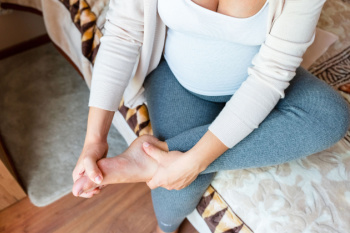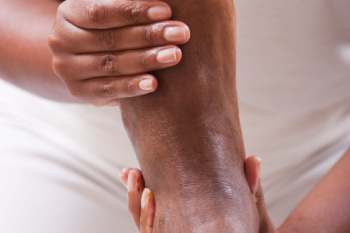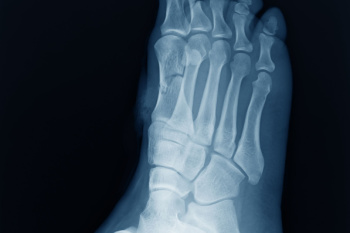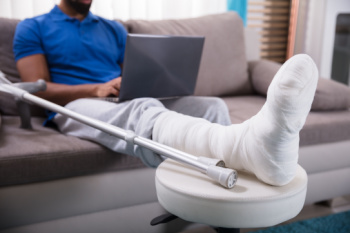March 2024
Foot Pain and Plantar Pressure in Pregnancy

Pregnancy is a transformative journey for women, but it often comes with physical challenges, including changes in foot structure and increased plantar pressure. As the body undergoes hormonal shifts and weight gain, the arches of the feet may flatten, leading to heightened plantar pressure. This increased pressure can contribute to foot pain, discomfort, and conditions like plantar fasciitis. The body's natural response to the added weight and altered biomechanics can result in strained ligaments and muscles, worsening foot pain during pregnancy. Choosing supportive footwear, incorporating gentle exercises, and opting for custom orthotics can help alleviate plantar pressure and mitigate foot pain. Understanding the dynamic relationship between foot pain and plantar pressure is essential for expectant mothers to prioritize foot health during this unique and transformative period. Seeking guidance from a podiatrist can provide tailored strategies to manage foot discomfort, allowing pregnant women to navigate this remarkable journey with greater comfort and well-being. If you have any type of foot pain, it is suggested that you visit a podiatrist who can offer you additional relief tips.
Pregnant women with swollen feet can be treated with a variety of different methods that are readily available. For more information about other cures for swollen feet during pregnancy, consult with one of our podiatrists from CyFair Family Foot Care. Our doctors will attend to all of your foot and ankle needs.
What Foot Problems Can Arise During Pregnancy?
One problem that can occur is overpronation, which occurs when the arch of the foot flattens and tends to roll inward. This can cause pain and discomfort in your heels while you’re walking or even just standing up, trying to support your baby.
Another problem is edema, or swelling in the extremities. This often affects the feet during pregnancy but tends to occur in the later stages.
How Can I Keep My Feet Healthy During Pregnancy?
- Wearing orthotics can provide extra support for the feet and help distribute weight evenly
- Minimize the amount of time spent walking barefoot
- Wear shoes with good arch support
- Wear shoes that allow for good circulation to the feet
- Elevate feet if you experience swelling
- Massage your feet
- Get regular, light exercise, such as walking, to promote blood circulation to the feet
If you have any questions please feel free to contact our office located in Cypress, TX . We offer the newest diagnostic and treatment technologies for all your foot and ankle needs.
Our Feet Deserve Care

Taking care of your feet daily is essential due to their pivotal role in your overall health and well-being. Our feet support your body's weight, facilitate mobility, and enable you to carry out daily activities. Neglecting foot care over time can result in various issues, including calluses, corns, cracked heels, fungal infections, and more serious conditions like plantar fasciitis or bunions. These ailments not only cause discomfort but can also impair mobility and diminish quality of life. By prioritizing foot care and seeking professional help from a podiatrist when needed, you can ensure that our feet remain strong, healthy, and capable of supporting you throughout our lives. If you would like advice on how to take care of your feet, it is suggested that you schedule an appointment with a podiatrist who can guide you, as well as offer expertise in diagnosing and treating a wide range of foot ailments, promoting optimal foot function and overall well-being.
Everyday foot care is very important to prevent infection and other foot ailments. If you need your feet checked, contact one of our podiatrists from CyFair Family Foot Care. Our doctors can provide the care you need to keep you pain-free and on your feet.
Everyday Foot Care
Often, people take care of their bodies, face and hair more so than they do for their feet. But the feet are a very important aspect of our bodies, and one that we should pay more attention to. Without our feet, we would not be able to perform most daily tasks.
It is best to check your feet regularly to make sure there are no new bruises or cuts that you may not have noticed before. For dry feet, moisturizer can easily be a remedy and can be applied as often as necessary to the affected areas. Wearing shoes that fit well can also help you maintain good foot health, as well as making it easier to walk and do daily activities without the stress or pain of ill-fitting shoes, high heels, or even flip flops. Wearing clean socks with closed shoes is important to ensure that sweat and bacteria do not accumulate within the shoe. Clean socks help to prevent Athlete’s foot, fungi problems, bad odors, and can absorb sweat.
If you have any questions please feel free to contact our office located in Cypress, TX . We offer the newest diagnostic and treatment technologies for all your foot and ankle needs.
Understanding the Symptoms of Cuboid Syndrome

Cuboid syndrome, a relatively uncommon but painful condition, occurs when the cuboid bone in the foot becomes displaced or irritated, leading to discomfort and limited mobility. The cuboid bone is located on the outer side of the foot, near the middle, and plays an important role in maintaining foot stability and movement. Diagnosis of cuboid syndrome involves a thorough physical examination by a podiatrist, focusing on the foot's range of motion, tenderness, and specific movements that reproduce pain. Imaging tests such as X-rays or MRI scans may be utilized to rule out other potential causes of foot pain and confirm the diagnosis. Symptoms of cuboid syndrome typically include pain on the outer side of the foot, difficulty walking or bearing weight, swelling, and a sensation of instability or shifting in the midfoot area. In severe cases, manipulation or mobilization techniques by a podiatrist may be necessary to realign the cuboid bone and alleviate symptoms. If you have pain in this part of your foot, it is suggested that you visit a podiatrist who can successfully diagnose and treat cuboid syndrome.
Cuboid syndrome, also known as cuboid subluxation, occurs when the joints and ligaments near the cuboid bone in the foot become torn. If you have cuboid syndrome, consult with one of our podiatrists from CyFair Family Foot Care. Our doctors will assess your condition and provide you with quality foot and ankle treatment.
Cuboid syndrome is a common cause of lateral foot pain, which is pain on the outside of the foot. The condition may happen suddenly due to an ankle sprain, or it may develop slowly overtime from repetitive tension through the bone and surrounding structures.
Causes
The most common causes of cuboid syndrome include:
- Injury – The most common cause of this ailment is an ankle sprain.
- Repetitive Strain – Tension placed through the peroneus longus muscle from repetitive activities such as jumping and running may cause excessive traction on the bone causing it to sublux.
- Altered Foot Biomechanics – Most people suffering from cuboid subluxation have flat feet.
Symptoms
A common symptom of cuboid syndrome is pain along the outside of the foot which can be felt in the ankle and toes. This pain may create walking difficulties and may cause those with the condition to walk with a limp.
Diagnosis
Diagnosis of cuboid syndrome is often difficult, and it is often misdiagnosed. X-rays, MRIs and CT scans often fail to properly show the cuboid subluxation. Although there isn’t a specific test used to diagnose cuboid syndrome, your podiatrist will usually check if pain is felt while pressing firmly on the cuboid bone of your foot.
Treatment
Just as the range of causes varies widely, so do treatments. Some more common treatments are ice therapy, rest, exercise, taping, and orthotics.
If you have any questions, please feel free to contact our office located in Cypress, TX . We offer the newest diagnostic and treatment technologies for all your foot care needs.
Arthritis Can Cause Pain in the Feet and Ankles
Symptoms of a Broken Foot

A broken foot, medically referred to as a foot fracture, occurs when one or more bones in the foot are cracked or fractured. The foot comprises multiple bones, including the metatarsals, phalanges, and tarsals, making it susceptible to fractures from trauma, overuse, or stress injuries. Common symptoms of a broken foot can include pain, swelling, bruising, and difficulty bearing weight on the affected foot. In severe cases, the broken bone may protrude through the skin, indicating an open fracture requiring immediate medical attention. Depending on the location and severity of the fracture, symptoms may vary, ranging from mild discomfort to severe pain and deformity. It is essential to seek medical evaluation if you suspect a broken foot, as untreated fractures can lead to complications such as chronic pain, arthritis, and impaired mobility. If you have endured a broken foot, it is suggested that you seek medical attention from a podiatrist who can determine the severity, and offer the treatment method that is right for you.
A broken foot requires immediate medical attention and treatment. If you need your feet checked, contact one of our podiatrists from CyFair Family Foot Care. Our doctors can provide the care you need to keep you pain-free and on your feet.
Broken Foot Causes, Symptoms, and Treatment
A broken foot is caused by one of the bones in the foot typically breaking when bended, crushed, or stretched beyond its natural capabilities. Usually the location of the fracture indicates how the break occurred, whether it was through an object, fall, or any other type of injury.
Common Symptoms of Broken Feet:
- Bruising
- Pain
- Redness
- Swelling
- Blue in color
- Numbness
- Cold
- Misshapen
- Cuts
- Deformities
Those that suspect they have a broken foot shoot seek urgent medical attention where a medical professional could diagnose the severity.
Treatment for broken bones varies depending on the cause, severity and location. Some will require the use of splints, casts or crutches while others could even involve surgery to repair the broken bones. Personal care includes the use of ice and keeping the foot stabilized and elevated.
If you have any questions please feel free to contact our office located in Cypress, TX . We offer the newest diagnostic and treatment technologies for all your foot and ankle needs.








